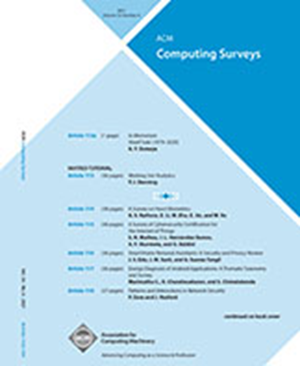对人工智能生成的视觉媒体的防御调查:检测、破坏和认证
IF 28
1区 计算机科学
Q1 COMPUTER SCIENCE, THEORY & METHODS
引用次数: 0
摘要
深度生成模型在各种计算机视觉应用中表现出令人印象深刻的性能,包括图像合成、视频生成和医学分析。尽管这些模型取得了重大进展,但它们可能被用于恶意目的,例如错误信息、欺骗和侵犯版权。在本文中,我们对人工智能生成的视觉媒体的防御研究工作进行了系统和及时的回顾,包括检测,中断和认证。我们回顾了现有方法,并在统一的被动和主动框架下总结了主流防务相关任务。此外,我们还研究了与防御可信度相关的衍生任务,如防御的鲁棒性和公平性。对于每种防御策略,我们制定了其一般管道,并提出了基于方法学策略的适用于防御任务的多维分类法。此外,我们总结了常用的评估数据集、标准和度量。最后,通过对综述研究的分析,提出当前研究面临的挑战和未来可能的研究方向。本文章由计算机程序翻译,如有差异,请以英文原文为准。
A Survey of Defenses Against AI-Generated Visual Media: Detection, Disruption, and Authentication
Deep generative models have demonstrated impressive performance in various computer vision applications, including image synthesis, video generation, and medical analysis. Despite their significant advancements, these models may be used for malicious purposes, such as misinformation, deception, and copyright violation. In this paper, we provide a systematic and timely review of research efforts on defenses against AI-generated visual media, covering detection, disruption, and authentication. We review existing methods and summarize the mainstream defense-related tasks within a unified passive and proactive framework. Moreover, we survey the derivative tasks concerning the trustworthiness of defenses, such as their robustness and fairness. For each defense strategy, we formulate its general pipeline and propose a multidimensional taxonomy applicable across defense tasks, based on methodological strategies. Additionally, we summarize the commonly used evaluation datasets, criteria, and metrics. Finally, by analyzing the reviewed studies, we provide insights into current research challenges and suggest possible directions for future research.
求助全文
通过发布文献求助,成功后即可免费获取论文全文。
去求助
来源期刊

ACM Computing Surveys
工程技术-计算机:理论方法
CiteScore
33.20
自引率
0.60%
发文量
372
审稿时长
12 months
期刊介绍:
ACM Computing Surveys is an academic journal that focuses on publishing surveys and tutorials on various areas of computing research and practice. The journal aims to provide comprehensive and easily understandable articles that guide readers through the literature and help them understand topics outside their specialties. In terms of impact, CSUR has a high reputation with a 2022 Impact Factor of 16.6. It is ranked 3rd out of 111 journals in the field of Computer Science Theory & Methods.
ACM Computing Surveys is indexed and abstracted in various services, including AI2 Semantic Scholar, Baidu, Clarivate/ISI: JCR, CNKI, DeepDyve, DTU, EBSCO: EDS/HOST, and IET Inspec, among others.
 求助内容:
求助内容: 应助结果提醒方式:
应助结果提醒方式:


